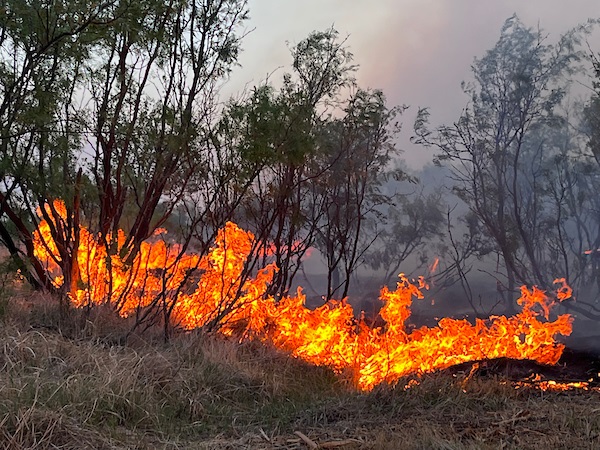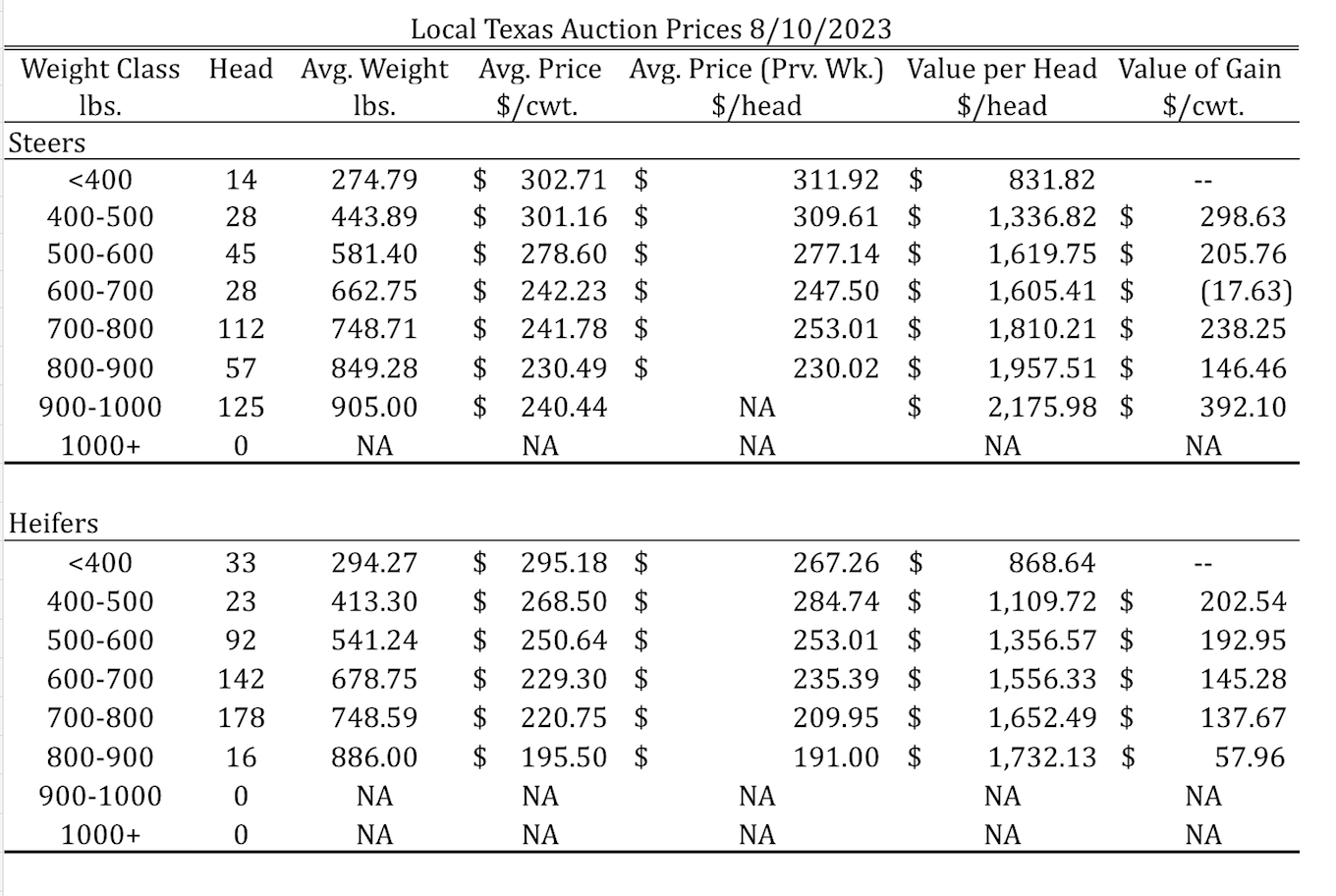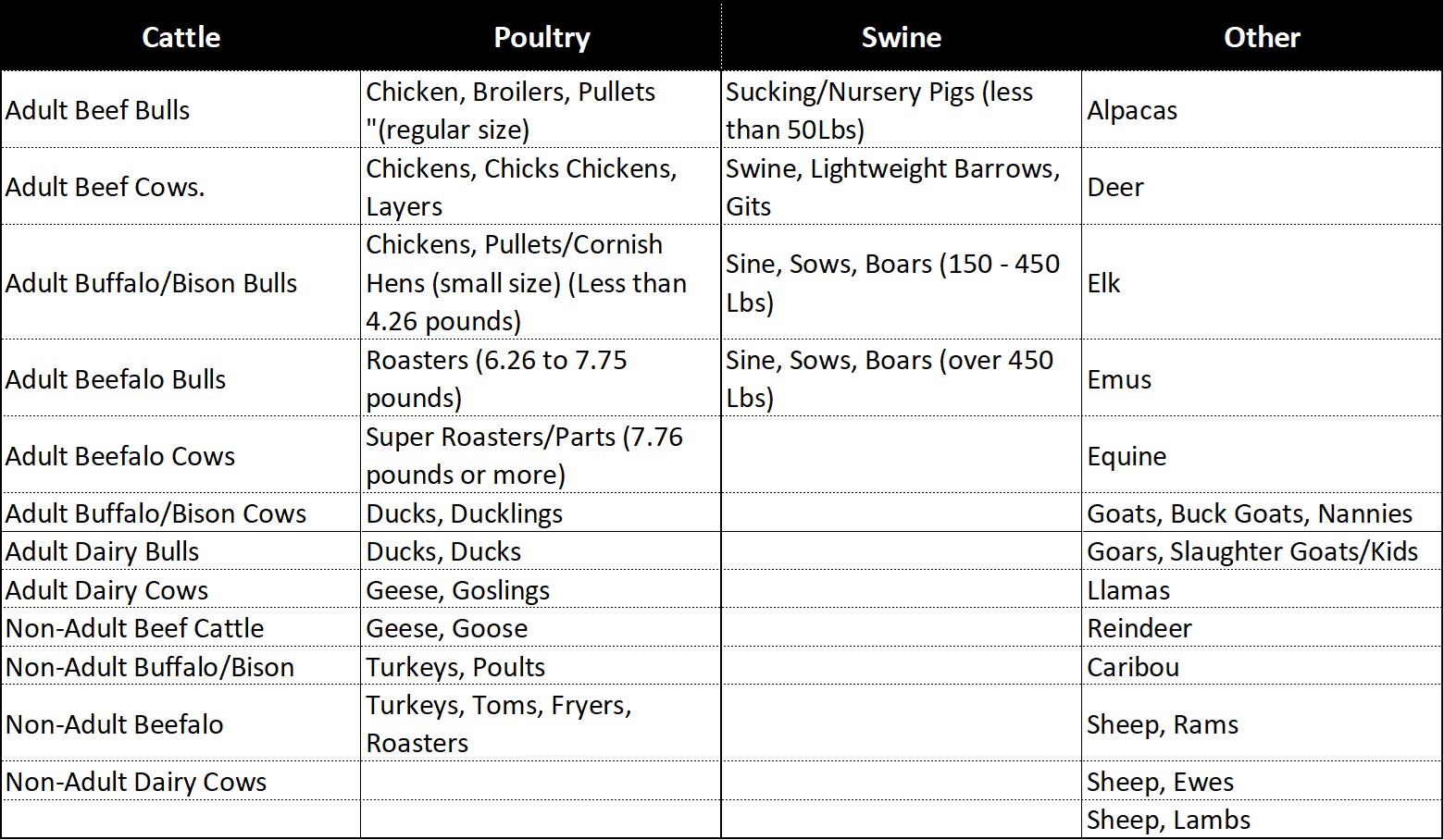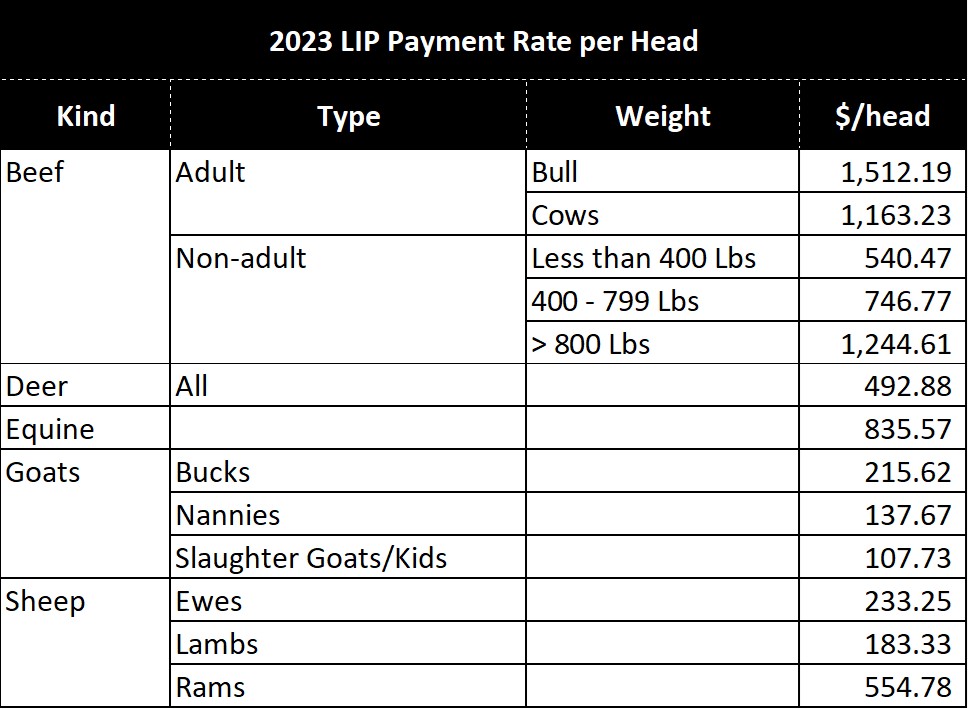
Last couple of weeks numerous wildfire events across Texas have unfortunately developed producing many unmeasurable losses. Today we will review the USDA LIP program that supports ranchers that suffered livestock losses due to wildfires and other weather-related events.
Board Update 8/14/2023

Tulia, Amarillo, Dalhart Average – Cattle Prices by Category 8/10/2023

Dates & Deadlines
8/18-8/19/2023 – San Angelo, Texas – Texas Sheep and Goat Expo
9/7/2023 – Online – Return of the Natives Webinar
10/5/2023 – Online – White Tail Deer Management
Livestock Indemnity Program Review
Last couple of weeks, our district and other parts of Texas have been hit by wildfires that have taken a toll on ranchers and farmers, causing unmeasurable losses for many. In these challenging moments, affected ranchers need to know which resources are there. The United States Department of Agriculture (USDA) has a program to support ranchers facing livestock losses due to wildfires and other extreme weather conditions. This program is the USDA Livestock Indemnity Program (LIP), and it could be the helping hand you need to get back on your feet.
Who is eligible for LIP?
If you’re an owner of livestock, the LIP program could be helpful for you. It’s open to those who own animals before the weather event causing losses occurs. If you’ve experienced a higher-than-normal death loss rate due to eligible weather events like wildfires, diseases, or predator attacks, you might qualify for this program. It’s essential to note that the program caters specifically to livestock raised for commercial purposes and doesn’t extend to animals kept for recreational use or those roaming free.
Eligible Livestock, Weather Events, and Other Eligible Loss Conditions
The scope of LIP is quite broad, covering a range of livestock, including cattle, poultry, swine, ovine, and other animal categories. The following table shows the livestock this program covers (Table 1).
Table 1: LIP eligible livestock for LIP “(Source: USDA)
Regarding the weather events considered eligible, it’s no surprise that Texas’s weather conditions make the list (Table 2). Wildfires and extreme heat, which often accompany droughts, are critical conditions that can trigger support from the program. However, regular droughts are only covered by LIP if they’re associated with specific diseases like anthrax. For ranchers hit hard by droughts, other USDA programs like the Livestock Forage Disaster Program (LFP) might be more suitable.
Table 2. LIP Eligible Weather Conditions
How Payments Are Calculated
Understanding how the program calculates payments is crucial. The payment is calculated by multiplying the number of animals lost by the national payment rate and the owner’s share of the livestock. Similarly, suppose your livestock gets injured due to eligible conditions, and you must sell them at a lower price. In that case, the payment is calculated by multiplying the number of injured livestock by the difference between the national payment rate and the actual selling price. Producers must provide evidence of the cause and losses that occurred. Good advice is to keep track of all documents that will help you prove the effect of the event, death losses, or the lower prices.
The USDA determines the national payment rate by taking 75% of the average fair market value of the livestock. This rate is then applied to calculate your payment (Table 3).
Table 3. 2023 LIP Payments Rates for Eligible Livestock Owners
Real-life Payment Examples
Let’s look at a couple of examples to understand how payments work. Suppose you own ten beef cows that unfortunately died in a wildfire event. The total amount you would receive in this case would be $11,632.30.
Payment = 10 cows * $1,163.23/cow = $11,632.30
Now, let’s say those same ten cows were injured during a wildfire, and you had to sell them at a reduced price of $700 each. In this scenario, your total payment would be $4,632.30.
Payment = 10 cows * ($1,163.23/cow – $700/cow) = 10 cows * $463.23/cow = $4,632.30
Applying for LIP
Applying for LIP is straightforward for those affected by eligible events. You’ll need to contact your local Farm Service Agency (FSA) office, where you can file a notice of loss within 30 days of the incident becoming apparent. To secure your payment, submit your application within 60 days of the calendar year’s end. Don’t forget to document all your losses as accurately as possible – your evidence will help you get the support you need.
Conclusion
In the face of adversity caused by wildfires and extreme weather events, the USDA Livestock Indemnity Program can be a lifeline for Texas ranchers. Whether you’ve experienced losses due to wildfires, diseases, or other eligible conditions, this program will help you get back on your feet.